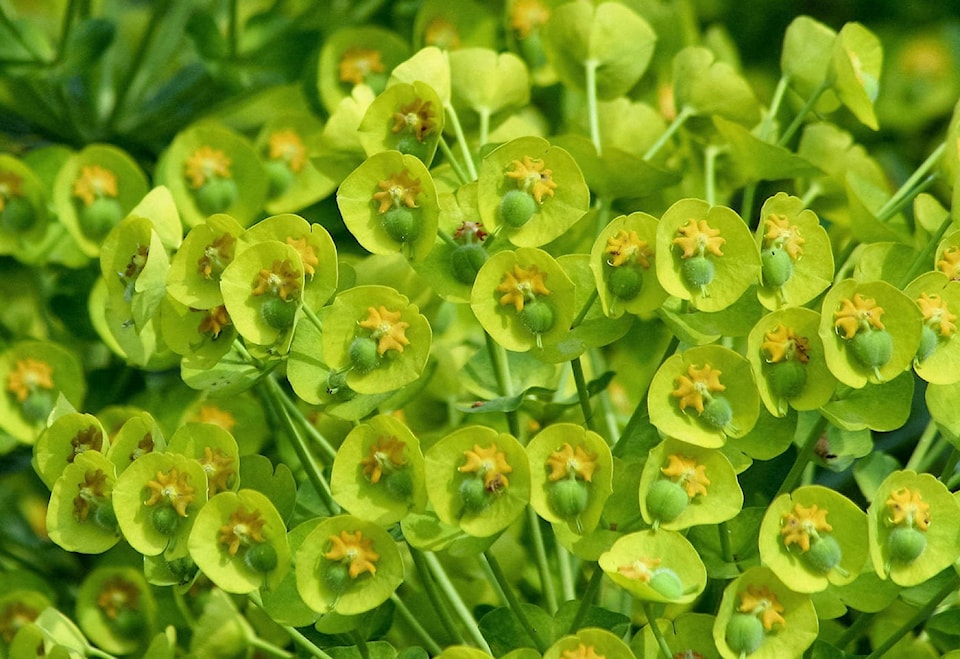What is a sympathetic colour?
In theory we all know what that adjective means, but it’s tricky to articulate such meaning beyond the human. A sympathetic person is one who listens before responding, a kind person we might think—someone who is there for us, supporting us as we struggle to grow into ourselves.
The same can be said of a green in a garden or floral arrangement. It acts as the supporter, the backdrop, and often as a tonic too – green is the colour of life-giving chlorophyll, fresh shoots and growth. To borrow from the great book The Secret Lives of Colour by Kassia St Clair: “In Latin the word for green is viridian, which is related to a large group of words that suggest growth and even life itself: vivere, to be green or vigorous; vis, strength…”.
Green supports other colours, but it’s also beautiful in its own right. As a secondary colour there’s a tremendous range of hues between the two primaries of yellow and blue. Consider these variations: chartreuse, pea, verdigris, emerald, avocado, olive, celadon, apple, absinthe, forest, mint, jade, kelly, sage…
I’m not a foliage gardener, so let’s start with where I’m most familiar—the green flowers, those inflorescences that add life to any border or arrangement. Here are some green favourites:
Hellebores, including the foetidus and viridis groups.
Spurges, including Euphorbia polychroma and Euphorbia charachias. While the latter is almost a weed in my garden, I bow down before its chartreuse blooms in spring. Acidic, electric, this colour can’t help but jump start any palette in the garden or the vase. (To use Euphorbias as a cut flower, just let their milky sap run out in a few changes of water. Some people are allergic to the sap, so wear gloves when handling cut ends).
In the same fresh lime colour range as the Euphorbia is a summer annual cut flower, Zinnia ‘Envy’. Easy to grow in sun, this flower charms with its sheer obnoxiousness, but it’s tremendously useful for standing up to jewel tones like rich rubies and deep purples.
Other annuals include the green Nicotianas (N. alata group and N. langdorfii). Both have spires of green trumpet-shaped flowers that perk up dark palettes.
The carrot family offers the Queen Anne’s Lace cousin Ammi majus, with perfect little nests of clear Irish (aka Kelly) green. Speaking of Ireland, another summer wonder is the annual flower Molucella aka Bells of Ireland, which is easily grown from seed and bends and swerves to a height of almost 4 ft in a season. Amaranth, grown as a food crop, has long draping flowers of pale green, grows like a weed in warm weather, and is spectacular spilling out of a vase.
Demure and enchanting, the perennial fringe cup Tellima grandiflora works well in shade gardens. As does Lady’s Mantle, Alchmellia mollis, a perennial with glaucous felted leaves and singing yellow-green blooms. Alchemilla is a filler of the first degree and tough as can be. If you clip it back after flowering, you will get a second flush of blossoms in midsummer.
The Geulder Rose, Viburnum opulus, has pale green lacecap-like flowers that blend well into any situation. Another green-flowering shrub is the uncommon Itea ilicifolia, which has elegant pendulous inflorescences in early spring; we need to see more of this plant.
If you’re one those people who like Albert Einstein believe ‘everything in life is vibration’, you’ll be pleased to know that the colour green is psychologically associated with harmony, safety and fertility. Those sound like the attributes of a fine garden to me.
Christin Geall is an avid Oak Bay gardener and creative non-fiction writing instructor at the University of Victoria.

